Contents
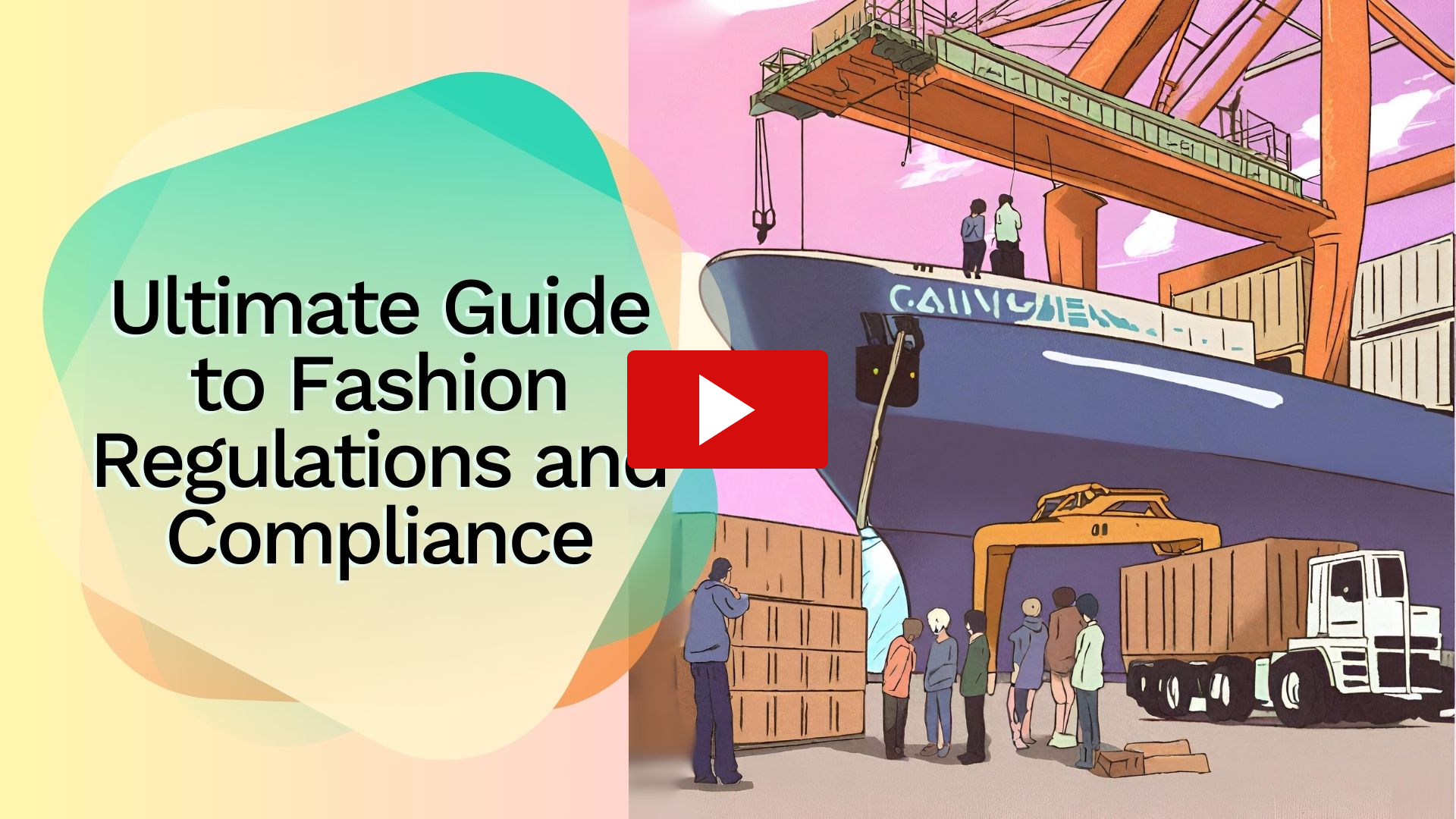
In the ever-evolving realm of fashion, where creativity meets commerce, the journey from concept to consumer is not merely about design and trends. Fashion product developers find themselves traversing a complex landscape of regulations and compliance that govern the industry. From ensuring product safety to respecting intellectual property rights and embracing sustainable practices, the path to delivering stylish creations is intertwined with a myriad of legal and ethical considerations.
In this blog post, we embark on a voyage through the intricacies of navigating fashion regulations and compliance. Whether you're a seasoned industry professional or a budding designer, understanding the legal frameworks and ethical standards is paramount to the success and sustainability of your fashion endeavors. Join us as we unravel the threads connecting creativity to responsibility, exploring the key aspects every fashion product developer must master to thrive in a conscientious and compliant fashion landscape. Fashion-forward, indeed!
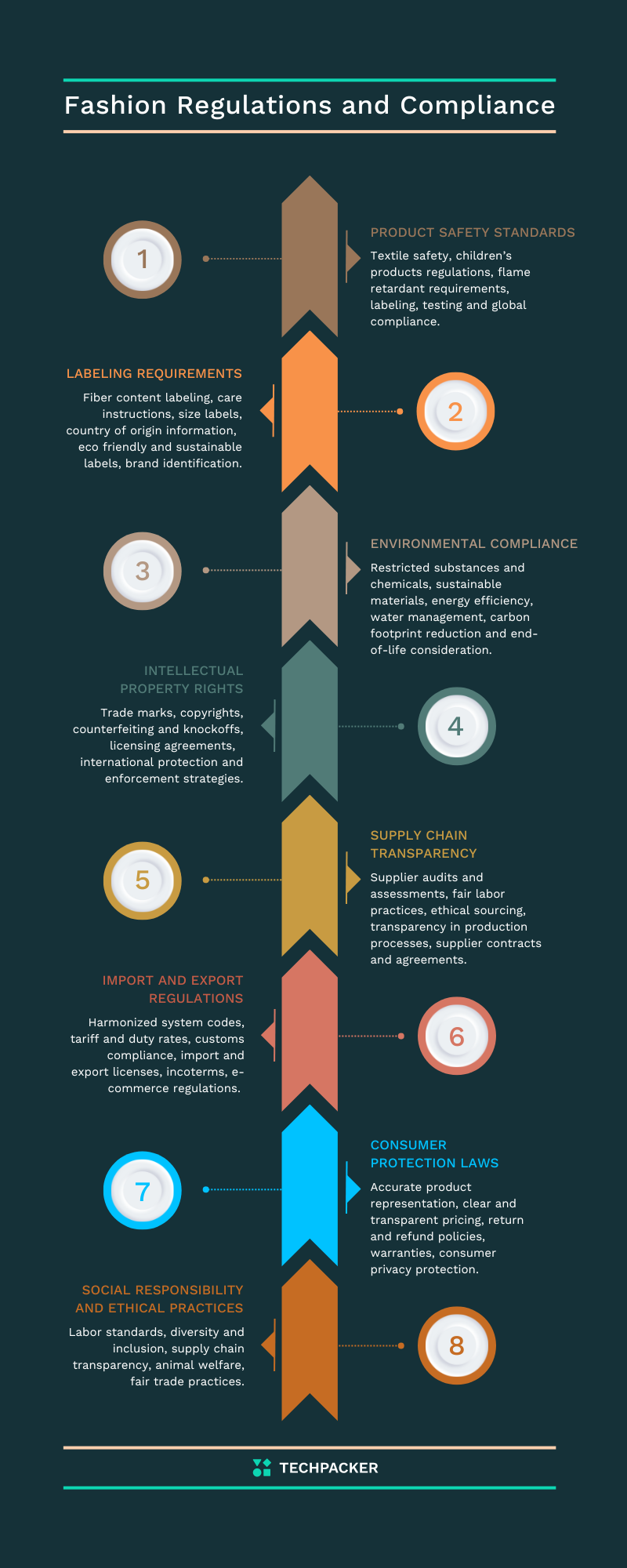
Product Safety Standards
Product safety standards play a pivotal role in the realm of fashion regulations and compliance, ensuring that the garments and accessories we wear not only meet aesthetic expectations but also adhere to stringent safety measures.
From textiles to accessories, understanding and implementing these standards are essential for fashion product developers.
Let's delve into the key aspects of product safety standards in the world of fashion:
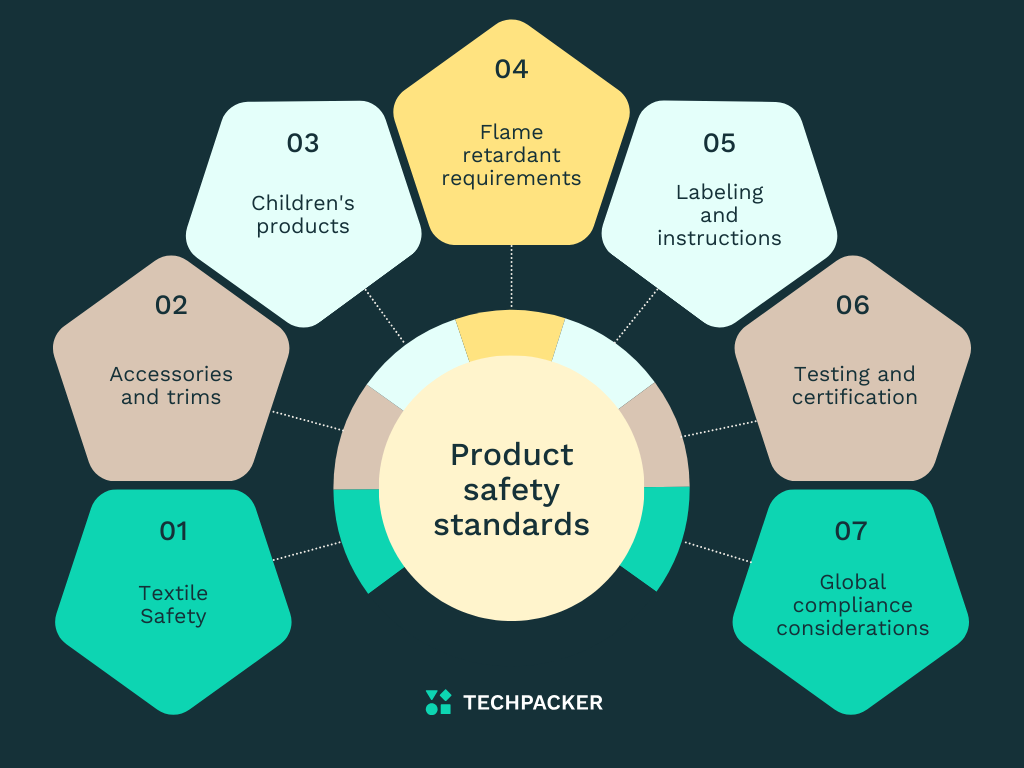
Textile Safety
Textiles must comply with regulations that address flammability, particularly for children's clothing. Fabric treatments or finishes may be required to meet safety standards.
Textile safety regulations often restrict or set limits on the presence of certain chemicals in textiles to protect consumers from potential harm.
Accessories and Trims
Ensure that accessories like buttons, zippers, and other hardware components meet safety standards. This includes testing for sharp edges or small parts that could pose a choking hazard.
Some materials used in accessories may cause allergic reactions. Compliance involves avoiding materials known to cause allergies and providing clear labeling.
Sign up for our FREE membership and get access to
All premium articles
E-courses and ebooks
Ad-free experience
Tech pack templates
Children's Products
Strict regulations govern the presence of lead and phthalates in children's products. Compliance requires thorough testing to ensure these harmful substances are below specified limits.
Clothing and accessories for children must meet regulations related to small parts that could pose a choking hazard.
Flame Retardant Requirements
Specific regulations apply to sleepwear to reduce the risk of burn injuries. Compliance involves using flame-resistant fabrics or applying flame-retardant treatments.
Labeling and Instructions
Provide clear and concise care instructions on labels to guide consumers on proper garment maintenance and usage.
Adhere to regulations that require accurate labeling of fiber content to prevent allergic reactions and help consumers make informed choices.
Testing and Certification
Engage in third-party testing to ensure that products meet safety standards. This may involve working with certified laboratories to conduct various tests, such as flammability and chemical content testing.
Obtain certifications indicating compliance with safety standards, providing assurance to consumers and retailers.
Global Compliance Considerations
If exporting products globally, be aware of and comply with international safety standards to meet the requirements of different markets.
Labelling Requirements
Labelling requirements are crucial elements that contribute to transparency and informed consumer choices. These requirements ensure that consumers have access to essential information about the products they purchase.
Let's delve into the key aspects of labelling requirements in the fashion industry:
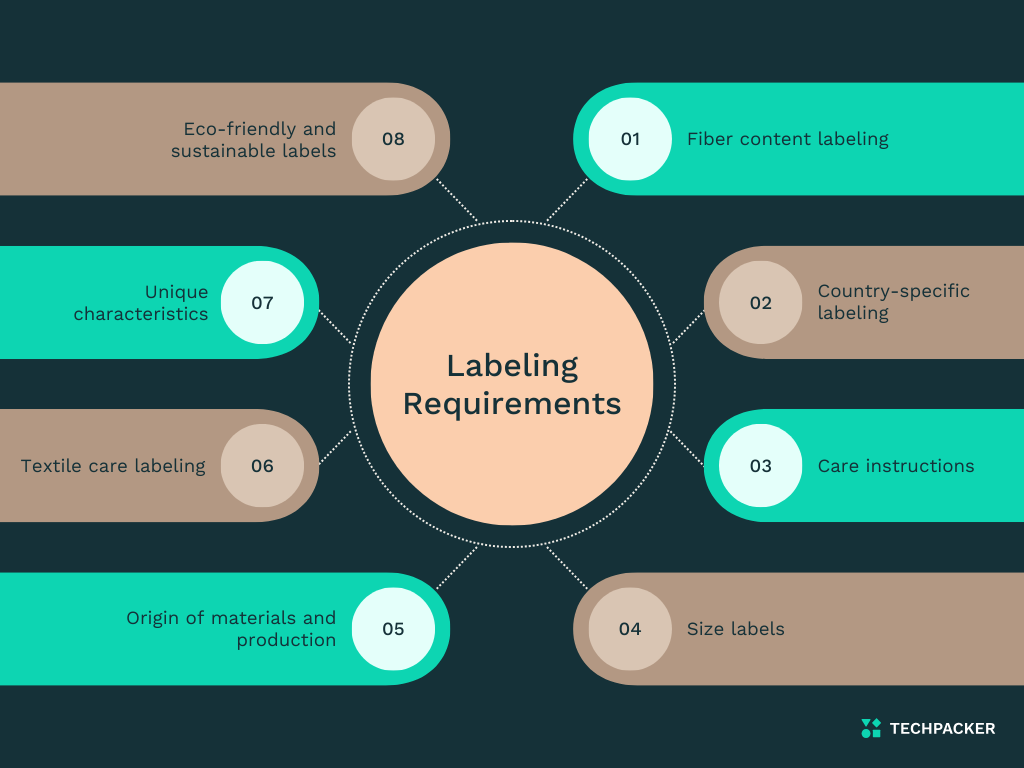
Fiber Content Labelling
Fashion products must accurately represent the fiber content of the materials used. Labels should specify the percentages of each fiber present in the garment.
Clear fiber content labelling is essential to prevent allergic reactions and assist consumers with specific material preferences.
Country-Specific Labelling
Labels must adhere to country-specific regulations. Different regions may have distinct requirements for language, format, and information to be included on product labels.
Care Instructions
Labels should provide clear and understandable care instructions for the proper maintenance of the garment. This includes washing, drying, and ironing guidelines.
Utilize both symbols and text to convey care instructions effectively. Symbols are particularly useful for international markets where language may be a barrier.
Size Labels
Size labels must be consistent with standardized sizing conventions. This ensures that consumers can easily find the right fit and reduces the likelihood of returns due to sizing issues.
Origin of Materials and Production
Some regulations require the disclosure of the country of origin for the materials used and the final production location.
Labels can be used to highlight ethical and sustainable practices, providing consumers with insights into the production process.
Textile Care Labelling
Certain textiles may require specific care instructions. For example, delicate fabrics may need special handling, and labels should communicate this information to consumers.
Additional Information
Labels can be used to highlight special features of the product, such as UV protection, water resistance, or other unique characteristics.
Any potential hazards or warnings, such as the use of small parts in children's clothing, should be clearly stated on the label.
Eco-Friendly and Sustainable Labels
Labels can showcase eco-friendly certifications or adherence to sustainable practices. This appeals to the growing consumer demand for environmentally conscious products.
Brand Identification
Labels serve as a platform for brand identification. Include the brand logo and name prominently to establish brand recognition.
Adhering to labeling requirements ensures legal compliance and builds trust between fashion brands and consumers. Transparent and informative labeling empowers consumers to make conscious choices while reinforcing the credibility and integrity of fashion product developers.

Environmental Compliance
Environmental compliance is an increasingly important aspect of fashion regulations, reflecting the industry's commitment to sustainable and responsible practices. Fashion product developers must navigate environmental regulations to minimize the ecological footprint of their creations.
Let's explore key considerations for environmental compliance in the fashion industry:
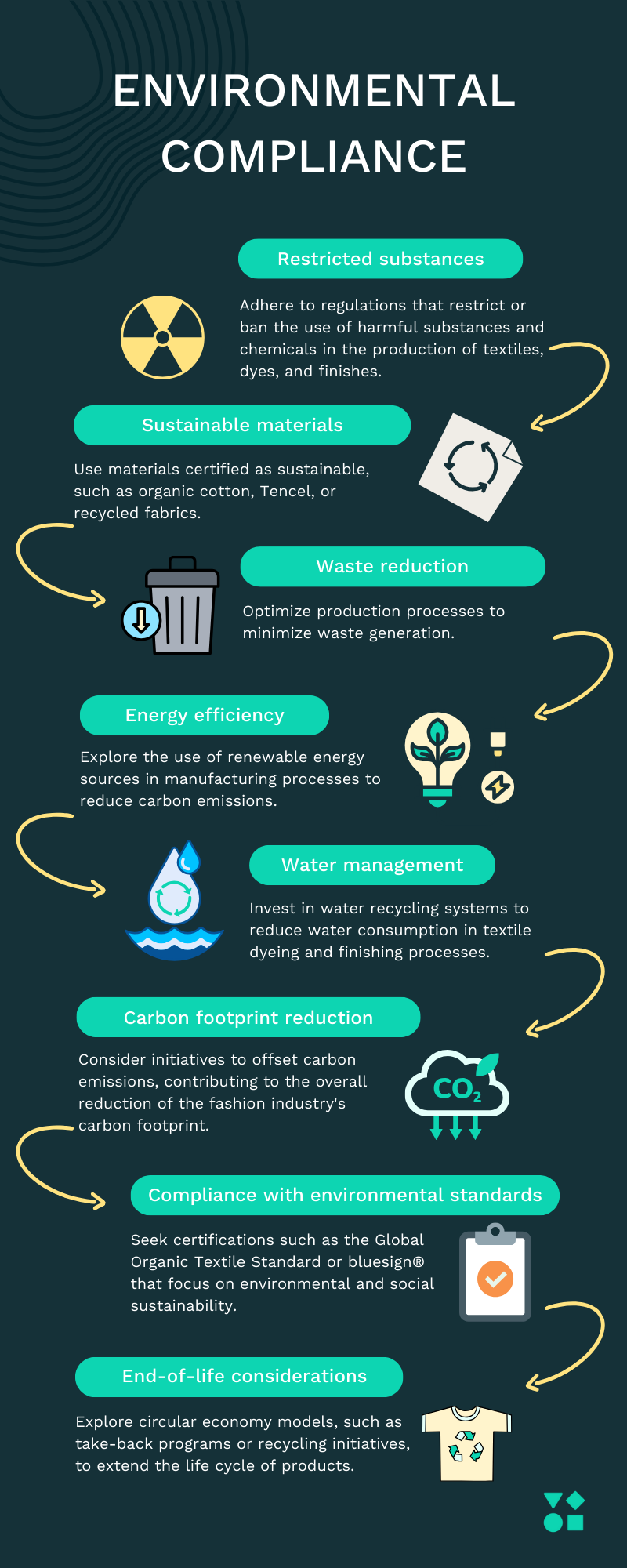
Restricted Substances and Chemicals
Adhere to regulations that restrict or ban the use of harmful substances and chemicals in the production of textiles, dyes, and finishes.
Explore and adopt eco-friendly alternatives for processes that traditionally involve hazardous chemicals.
Sustainable Materials
Use materials certified as sustainable, such as organic cotton, Tencel, or recycled fabrics.
Implement systems to trace the origin of materials, ensuring transparency in the supply chain and promoting accountability.
Waste Reduction and Recycling
Optimize production processes to minimize waste generation.
Embrace recyclable and biodegradable packaging materials to reduce the environmental impact of packaging waste.
Energy Efficiency
Explore the use of renewable energy sources in manufacturing processes to reduce carbon emissions.
Implement energy-efficient technologies to minimize the overall energy consumption of production facilities.
Water Management
Invest in water recycling systems to reduce water consumption in textile dyeing and finishing processes.
Ensure proper treatment of wastewater to minimize environmental pollution.
Carbon Footprint Reduction
Consider initiatives to offset carbon emissions, contributing to the overall reduction of the fashion industry's carbon footprint.
Optimize transportation practices to reduce the environmental impact of shipping products.
Compliance with Environmental Standards
Seek certifications such as the Global Organic Textile Standard (GOTS) or bluesign® that focus on environmental and social sustainability.
Conduct regular environmental audits to assess compliance with established standards.
End-of-Life Considerations
Explore circular economy models, such as take-back programs or recycling initiatives, to extend the life cycle of products.
Integrate biodegradable materials into product designs to minimize environmental impact at the end of a product's life.
Regulatory Compliance
Keep abreast of evolving environmental regulations related to the fashion industry in different regions.
Take proactive measures to comply with upcoming regulations, even before they become mandatory.
By embracing environmental compliance, fashion product developers can contribute to a more sustainable and eco-conscious industry. Beyond meeting legal requirements, integrating environmental considerations into the core of fashion production aligns with consumer values and the global movement toward a greener future.
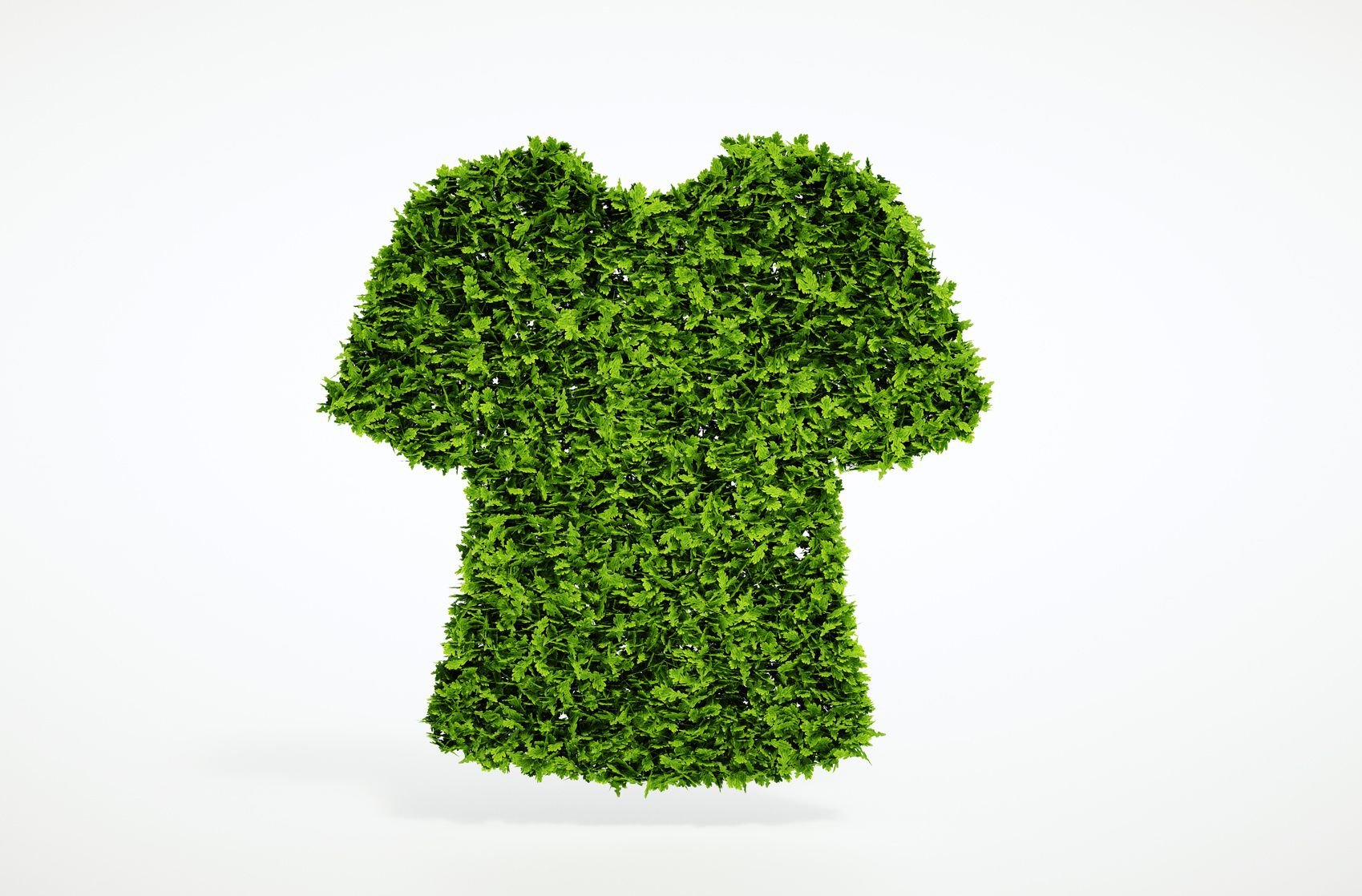
Intellectual Property Rights
Intellectual Property Rights (IPR) are crucial in the fashion industry to protect the creative endeavors of designers and brands. Fashion product developers must navigate a complex landscape of trademarks, copyrights, and designs to ensure their creations are legally safeguarded.
Let's delve into the key aspects of Intellectual Property Rights in fashion regulations and compliance:
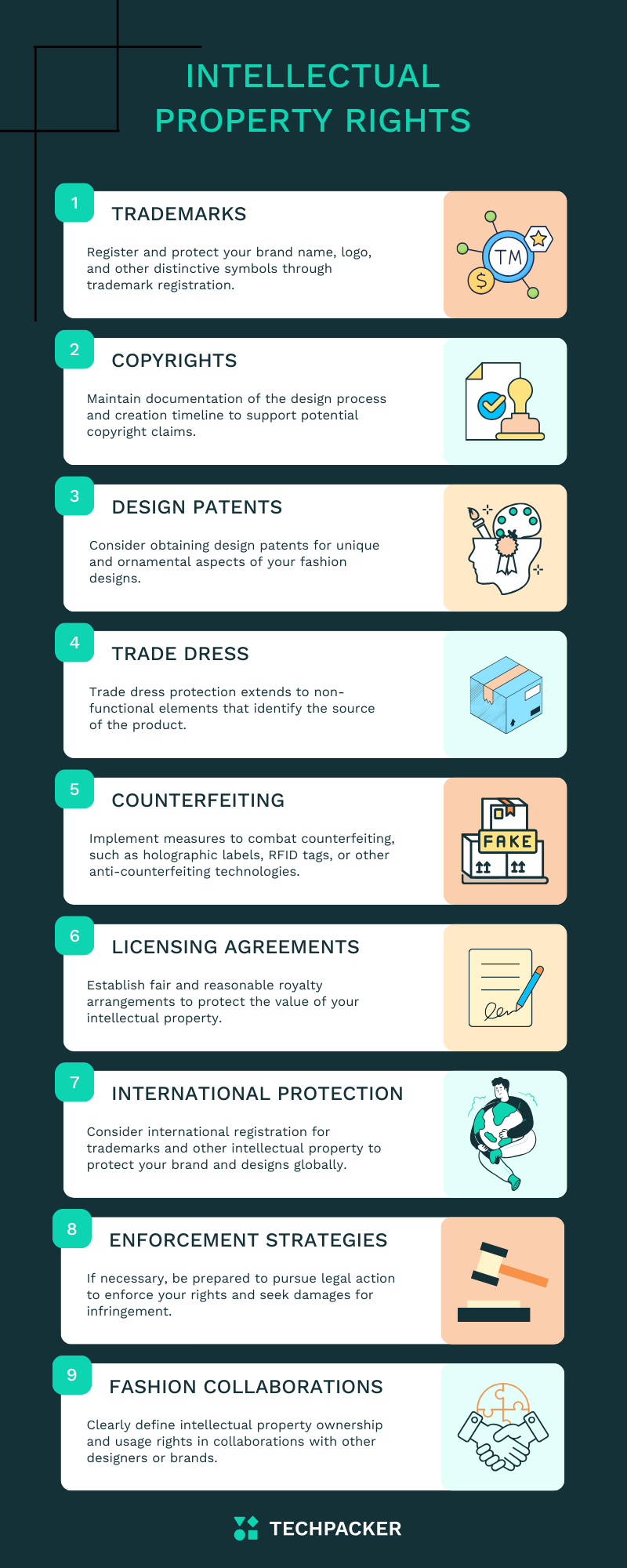
Trademarks
Register and protect your brand name, logo, and other distinctive symbols through trademark registration.
Conduct thorough trademark searches to ensure your brand does not infringe on existing trademarks.
Copyrights
Original artistic and creative designs may be eligible for copyright protection. Maintain documentation of the design process and creation timeline to support potential copyright claims.
Design Patents
Consider obtaining design patents for unique and ornamental aspects of your fashion designs. Ensure the design is novel and not publicly disclosed before seeking patent protection.
Trade Dress
Protect the distinctive overall appearance or "trade dress" of your products. Trade dress protection extends to non-functional elements that identify the source of the product.
Counterfeiting and Knockoffs
Implement measures to combat counterfeiting, such as holographic labels, RFID tags, or other anti-counterfeiting technologies. Be prepared to take legal action against parties producing knockoffs or infringing on your intellectual property.
Licensing Agreements
If entering into licensing agreements, ensure that terms are clear and specify the scope of use for the licensed intellectual property.
Establish fair and reasonable royalty arrangements to protect the value of your intellectual property.
International Protection
Consider international registration for trademarks and other intellectual property to protect your brand and designs globally.
Be aware of intellectual property laws in different countries to navigate global markets effectively.
Enforcement Strategies
Issue cease and desist letters to parties infringing on your intellectual property rights before resorting to legal action.
If necessary, be prepared to pursue legal action to enforce your rights and seek damages for infringement.
Fashion Collaborations
Clearly define intellectual property ownership and usage rights in collaborations with other designers or brands.
Clearly stipulate the ownership of intellectual property rights for jointly created designs.
By navigating and respecting Intellectual Property Rights, fashion product developers can safeguard their creative assets, build brand value, and establish a competitive edge in the dynamic fashion industry.
Supply Chain Transparency
Supply chain transparency has become a critical component of fashion regulations and compliance, reflecting the industry's commitment to ethical and responsible practices. Fashion product developers must navigate a complex supply chain to ensure transparency and accountability.
Let's delve into key considerations for supply chain transparency in the fashion industry:
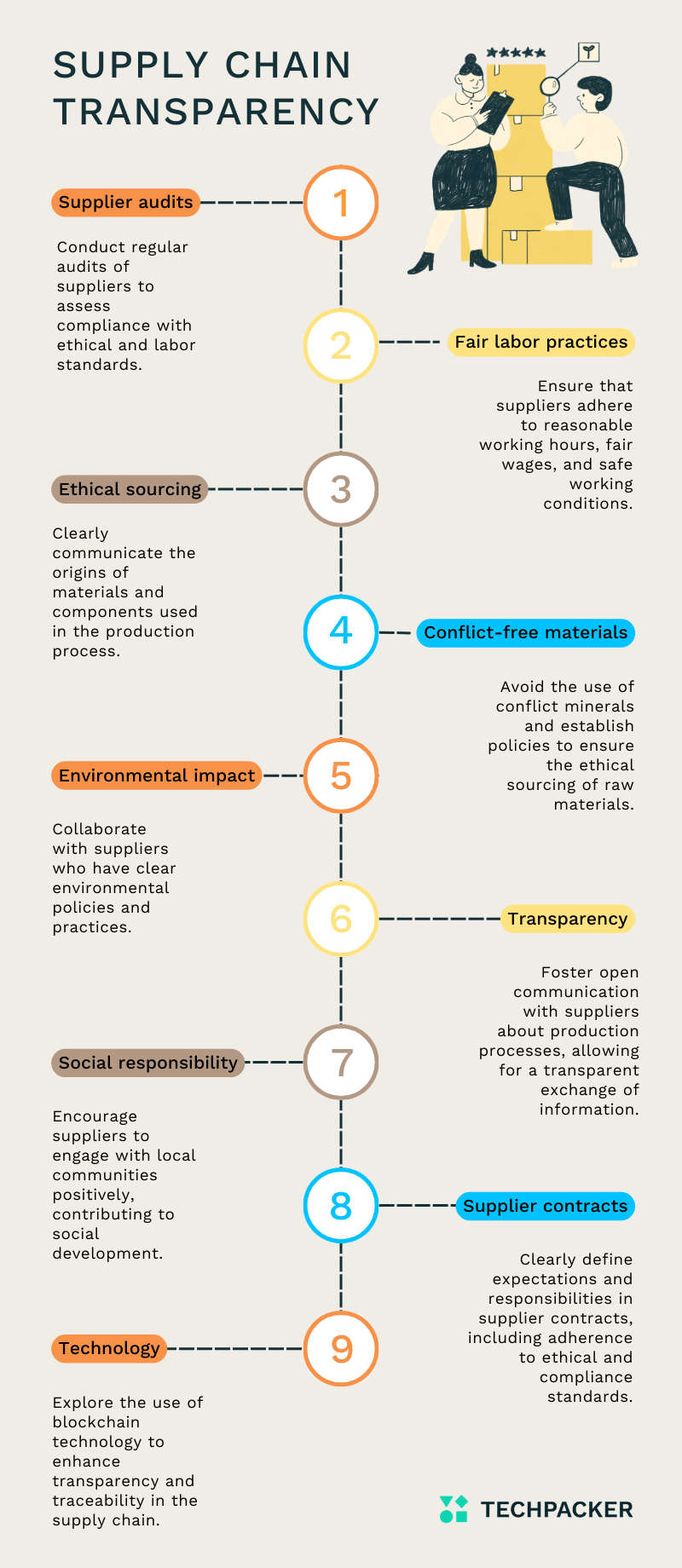
Supplier Audits and Assessments
Conduct regular audits of suppliers to assess compliance with ethical and labor standards.
Identify and assess potential risks within the supply chain, such as labor violations or environmental concerns.
Fair Labor Practices
Ensure that suppliers adhere to fair labor practices, including reasonable working hours, fair wages, and safe working conditions.
Prioritize suppliers with recognized certifications for fair labor practices.
Ethical Sourcing
Clearly communicate the origins of materials and components used in the production process. Implement traceability systems to track the journey of raw materials from source to final product.
Conflict-Free Materials
Avoid the use of conflict minerals and establish policies to ensure the ethical sourcing of raw materials. Seek certifications that guarantee the conflict-free status of materials.
Environmental Impact
Collaborate with suppliers who have clear environmental policies and practices.
Prioritize the use of sustainable and eco-friendly materials to minimize the environmental impact of production.
Transparency in Production Processes
Foster open communication with suppliers about production processes, allowing for a transparent exchange of information.
Establish a clear supplier code of conduct outlining expectations for ethical and transparent practices.
Social Responsibility Initiatives
Encourage suppliers to engage with local communities positively, contributing to social development. Explore collaborative programs that support social responsibility and community well-being.
Supplier Contracts and Agreements
Clearly define expectations and responsibilities in supplier contracts, including adherence to ethical and compliance standards.
Specify consequences for suppliers failing to meet transparency and compliance requirements.
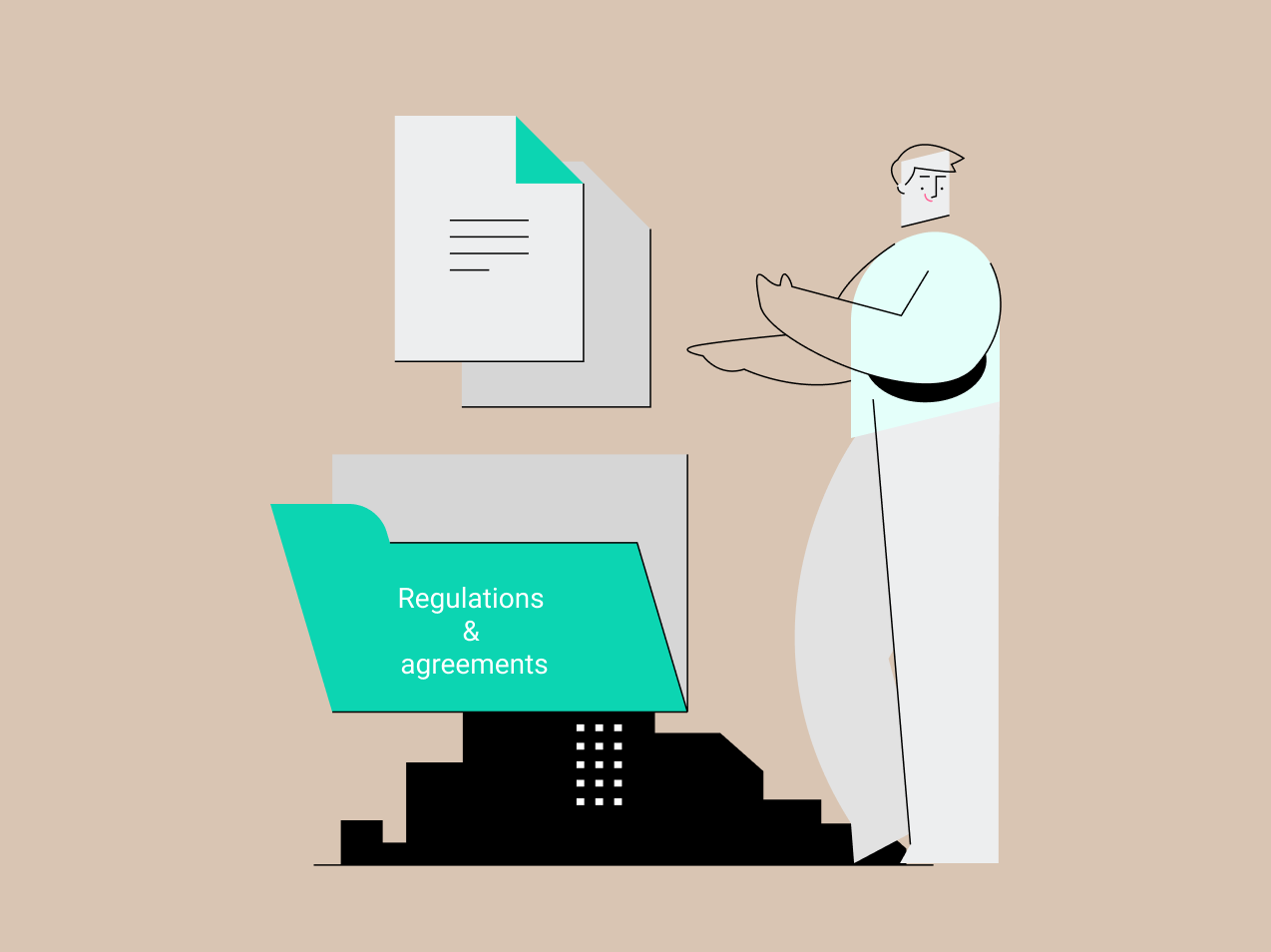
Technology and Tools
Explore the use of blockchain technology to enhance transparency and traceability in the supply chain. Implement advanced supply chain management systems to monitor and manage transparency effectively.
By prioritizing supply chain transparency, fashion product developers can build trust with consumers, differentiate themselves in the market, and contribute to the overall improvement of ethical and sustainable practices in the fashion industry.
Import and Export Regulations
Navigating import and export regulations is crucial for fashion product developers engaging in international trade. Adhering to these regulations ensures smooth cross-border operations and compliance with customs requirements.
Let's explore key considerations for import and export regulations in the fashion industry:
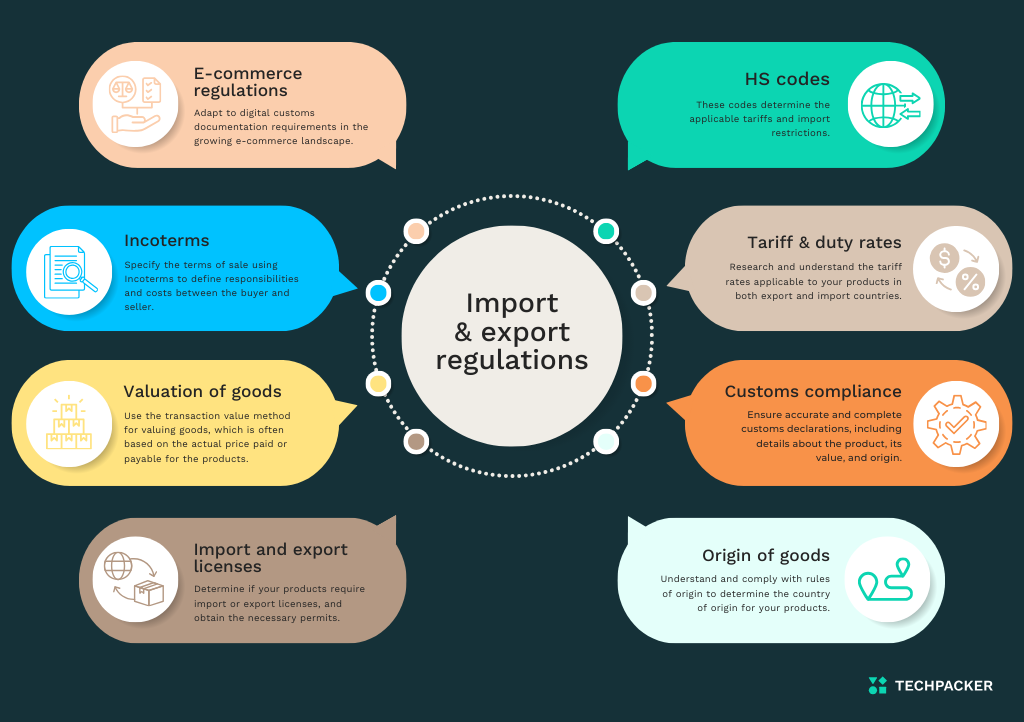
Harmonized System (HS) Codes
Classify products accurately using Harmonized System (HS) codes. These codes determine the applicable tariffs and import restrictions.
Provide clear documentation, including commercial invoices and packing lists, with the correct HS codes.
Tariff and Duty Rates
Research and understand the tariff rates applicable to your products in both export and import countries.
Explore duty drawback programs that may allow for refunds on duties paid on imported materials used in exported goods.
Customs Compliance
Ensure accurate and complete customs declarations, including details about the product, its value, and origin.
Be aware of prohibited and restricted goods in both the exporting and importing countries.
Origin of Goods
Understand and comply with rules of origin to determine the country of origin for your products. Leverage preferential trade agreements that may offer reduced tariffs for goods meeting specific origin criteria.
Import and Export Licenses
Determine if your products require import or export licenses, and obtain the necessary permits.
Ensure that your operations comply with the licensing regulations of both the exporting and importing countries.
Valuation of Goods
Use the transaction value method for valuing goods, which is often based on the actual price paid or payable for the products.
Ensure compliance with transfer pricing regulations, especially in cases of related-party transactions.
Incoterms
Specify the terms of sale using Incoterms (International Commercial Terms) to define responsibilities and costs between the buyer and seller.
Clearly outline the allocation of risks, transportation responsibilities, and insurance coverage.
E-commerce Regulations
Adapt to digital customs documentation requirements in the growing e-commerce landscape.
Stay informed about e-commerce taxation regulations in both exporting and importing countries.
By navigating import and export regulations diligently, fashion product developers can mitigate risks, avoid unnecessary delays, and ensure the smooth flow of goods across international borders. Staying informed about regulation changes and seeking expert advice can be instrumental in achieving compliance in the ever-evolving landscape of global trade.
Consumer Protection Laws
Consumer protection laws are integral to ensuring fair and transparent transactions in the fashion industry. Fashion product developers must be well-versed in these laws to safeguard the rights and interests of consumers.
Let's explore key considerations for consumer protection laws in the fashion sector:
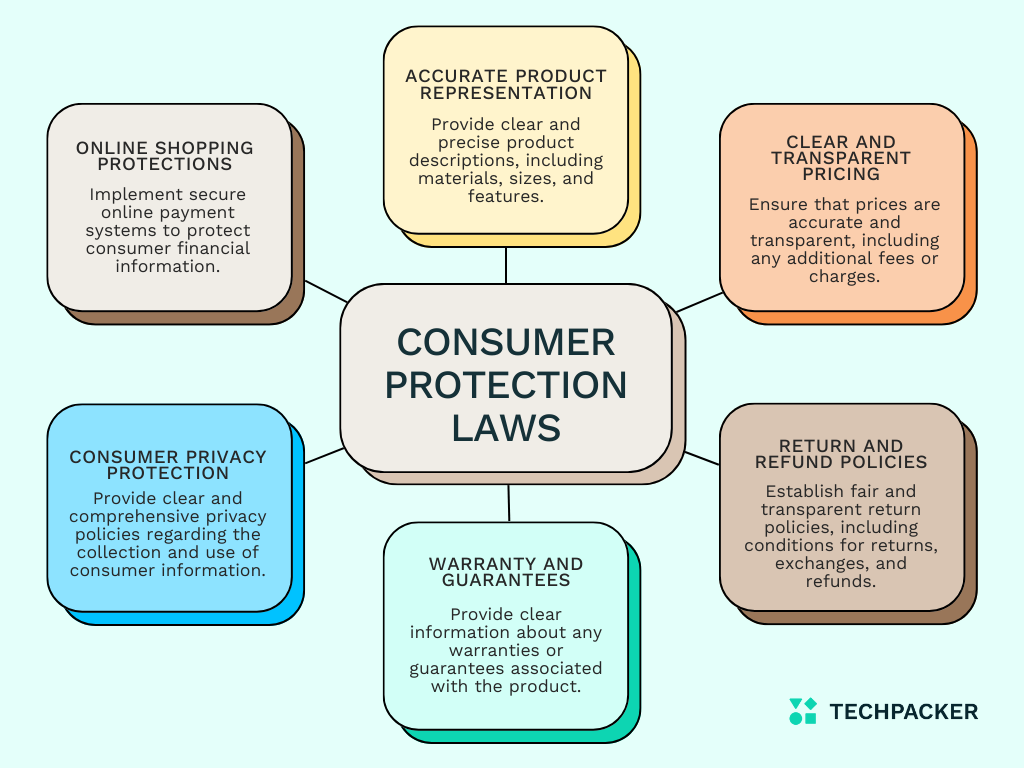
Accurate Product Representation
Adhere to truth in advertising principles by accurately representing products in marketing materials. Provide clear and precise product descriptions, including materials, sizes, and features.
Clear and Transparent Pricing
Ensure that prices are accurate and transparent, including any additional fees or charges. Clearly communicate terms and conditions for discounts, promotions, and sales.
Return and Refund Policies
Establish fair and transparent return policies, including conditions for returns, exchanges, and refunds. Clearly communicate return and refund policies to consumers before purchase.
Warranty and Guarantees
Provide clear information about any warranties or guarantees associated with the product. Comply with applicable warranty laws, which may vary by region.
Consumer Privacy Protection
Safeguard consumer data and adhere to data protection laws. Provide clear and comprehensive privacy policies regarding the collection and use of consumer information.
Online Shopping Protections
Implement secure online payment systems to protect consumer financial information. Provide transparent information on delivery times and tracking options for online purchases.
By prioritizing compliance with consumer protection laws, fashion product developers can foster trust, build positive brand reputations, and establish lasting consumer relationships. Staying informed about evolving regulations and seeking legal advice when needed are essential practices in maintaining compliance within the dynamic landscape of consumer protection.
Social Responsibility and Ethical Practices
Social responsibility and ethical practices are at the forefront of modern fashion regulations and compliance. As the fashion industry evolves, consumers increasingly demand transparency and ethical behavior from brands. Fashion product developers must navigate a complex landscape of social and ethical considerations.
Let's delve into key aspects of social responsibility and ethical practices in the fashion industry:
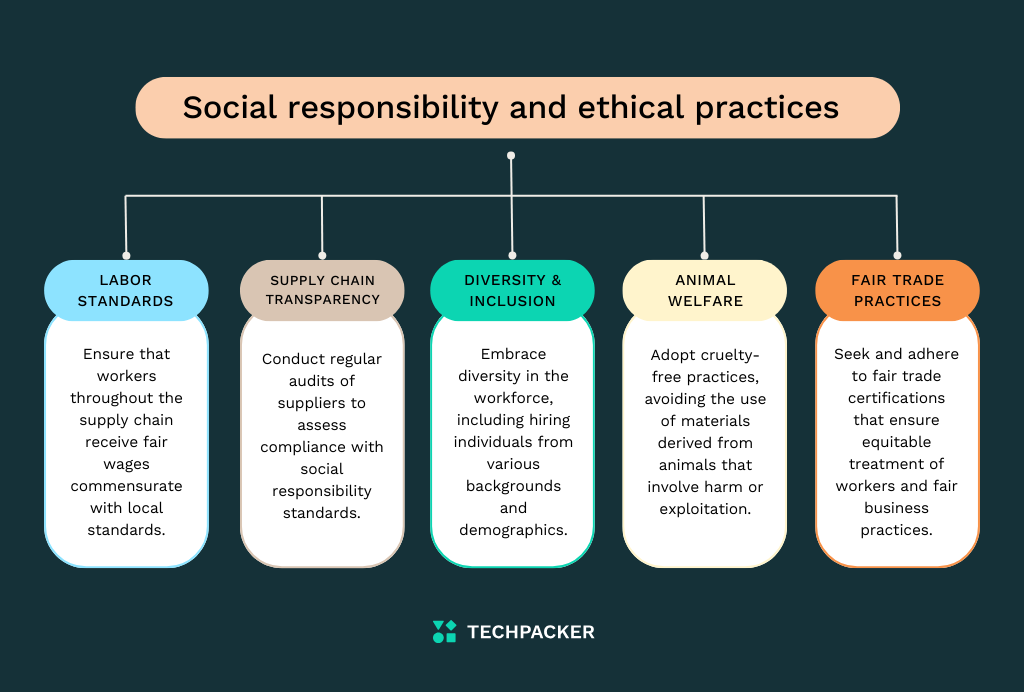
Labor Standards
Ensure that workers throughout the supply chain receive fair wages commensurate with local standards. Commit to providing safe and healthy working conditions for all employees, addressing ventilation and workplace ergonomics.
Supply Chain Transparency
Establish traceability in the supply chain to ensure transparency regarding the origins of raw materials and manufacturing processes. Conduct regular audits of suppliers to assess compliance with social responsibility standards.
Diversity and Inclusion
Embrace diversity in the workforce, including hiring individuals from various backgrounds and demographics. Ensure diverse representation in marketing and promotional materials to reflect the broader consumer base.
Animal Welfare
Adopt cruelty-free practices, avoiding the use of materials derived from animals that involve harm or exploitation.
Explore and implement ethical alternatives to traditional animal-based materials.
Fair Trade Practices
Seek and adhere to fair trade certifications that ensure equitable treatment of workers and fair business practices. Communicate transparently about pricing to demonstrate fair compensation throughout the supply chain.
Summary
By embracing social responsibility and ethical practices, fashion product developers can build trust with consumers, align with changing societal values, and contribute to positive global impacts. Integrating ethical considerations into the core of business operations is not just a compliance requirement but a commitment to creating a fashion industry that values people, the planet, and ethical business practices.
As we conclude our journey through the intricate landscape of fashion regulations and compliance, it's evident that the modern fashion industry is evolving towards a more responsible and transparent future. Navigating these regulations isn't just about meeting legal standards; it's a commitment to ethical practices, sustainability, and social responsibility.
Fashion product developers play a pivotal role in shaping the industry's narrative, and by embracing these regulations, they pave the way for a fashion landscape that respects consumers, values ethical practices, and prioritizes the well-being of our planet.
Thank you for joining us on this exploration of navigating fashion regulations and compliance. The journey doesn't end here; it continues with each conscious choice, every sustainable initiative, and the collective effort to redefine fashion for the better. Stay inspired, stay informed, and let's shape a fashion industry that truly makes a statement – a statement of responsibility and style, hand in hand.



